
|   |

|   |
 e-mail: ukb7@rediffmail.com Fragrance of Fifty Roses Photos courtesy: Kalamandalam Calcutta June 23, 2017 Kalamandalam in Kolkata - a bit of Kerala transplanted into fertile Bengal - was, in the beginning, far less an institution and more like a dream for its founder-guru Govindan Kuttty. Armed with a thorough grounding in Kathakali from Kerala Kalamandalam and accompanied by an 18-year-old Thankamani - with her own exposure to dance for four years at Kalamandalam and an extra year on mridangam - - as his consort, the duo landed in the eastern metropolis in 1958. The language barrier was gradually overcome and the classical dance trainings by the Kuttys went on in right earnest, while the epithet "Kalamandalam" stuck in the meantime! Also, because of his immense talent as a Kathakali hero, Govindan was much sought after by Kolkata's Gita Bitan and other institutions, mostly for Tagore's dance-dramas. Govindan's sudden passing away in 2007 was decidedly a major blow. Yet, 50 years and some 15,000 trained students later, Kalamandalam Calcutta has come to stay rooted in the city's culturescape and today - - with its spread-eagled seven centres and nearly 2,000 students at any given moment - it is a major force for classical arts to reckon with. 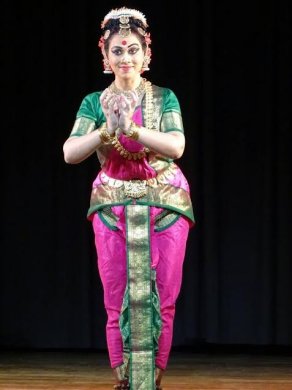
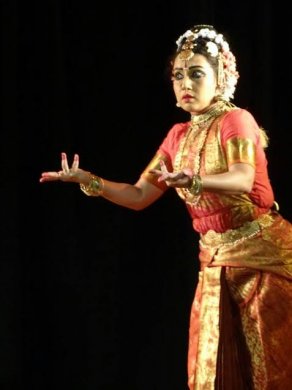
Golden Jubilee Celebrations of Kalamandalam Calcutta was appropriately planned recently as an elaborate bouquet of significant group compositions by guru Thankamani over these 50 years with the institution's faculty as well as her senior students. The programme was touched off by an invocatory keertana, Ananda nartana Ganapati bhavaye... in ragam Gambheera Nattai. It was quite a Ninda-Stuti, contrasting Ganesha's diminutive stature, single-toothed ugliness and avarice for food, against his grace, knowledge and profound wisdom. Next was Kubera Kavitwam in ragam Hindolam, describing Kubera's immense wealth in heaven. Then came Chidambaram Stuti, in ragamalika and talamalika, in adulation of the mysterious spiritual force of Akashalingam, with his cosmic figure as a fountainhead of art, literature, dance and music. Another ode followed to Nataraja in raga Nattai, from a lady-in-waiting, hailing his righteousness and protection. Hamara pyara Bharatvarsha..., a Hindi lyric by the poet Jayshankar, came as the next group choreography, symbolising the golden jubilee of Indian Independence as the golden rays of the arisen sun, spreading the light of civilization to the world. There was also a delightful tillana - sung soulfully by Sukumar Kutty in ragam Kuntalavarali - - with a number of alluringly sculpturesque poses and variegated patterns of movements executed with grace and elegance and exemplifying all the three elements of classical dance: speed, stability and line. Quite a departure was the following Ganita Vilas based on geometrical figures, bringing out the various patterns of arcs, curves, circles, straight lines, diagonals, rectangles and rhomboids, by using intricate footwork, supple body postures and delicate eye movements. A Balamurali Krishna composition, Pari pari nee padame..., in ragam Hamsadhwani was neatly executed as a hymn on Ganesha. A major group composition - - performed by five teachers of Kalamandalam - - was from the saint-poet Vallabhacharya's Madhurashtakam, in praise of Krishna, the King of Mathura, in order to celebrate his smiling, striding, sleeping, eating and everything he does in his stylised grandeur - - even his deeds (and misdeeds!) like playing pranks with Sakhis, his hiding their clothes on the Yamuna banks, his dancing in Rasa Lila and his holding aloft the Govardhan hill. The grand finale was Dashavatar Stotra from Jayadeva's Gita Govinda, bringing in as many as 13 dancers to craft many alluring figures of the ten incarnations of Vishnu, in their several formations. 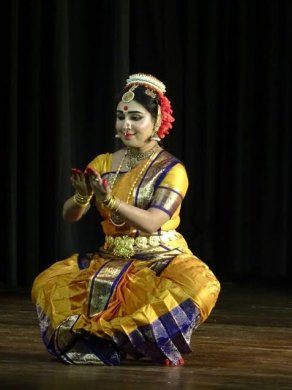
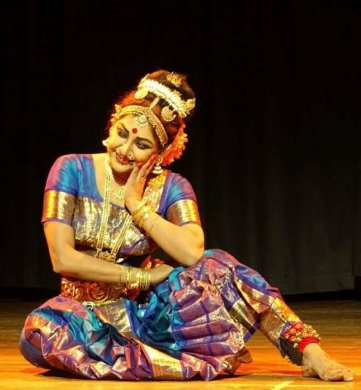
A separate mention needs be made of Malavika Sen, among the senior most disciples of the institution, presenting several scintillating solos. Her most striking item was her depicting popular ditty Krishna nee begane baro... in ragam Yaman Kalyan, which Thankamani had choreographed primarily as a khandita nayika - seeking the sweet companionship of Krishna - while recalling, only in retrospect, his childhood pranks and games with his mother Yashoda. It was quite a novel approach and Malavika's natyadharmi approach was most appealing. Malavika's second and third solos were by grafting together two keertanas: first, Dakshina Murthy doing a vigorous Shiva Tandava and second, Mahishsura Mardini executing the goddess Durga's both Shuvankari (benevolent) and Bhayankari (malevolent) manifestations. Her last solo was the famous Krishna Sabdam set in Kuchipudi style, for a change, introducing mime, bridging between pure dance and the major features of the form. This was at best a pleasant diversion. Excerpts from interview with Guru Thankamani Kutty: What was your first experience in Bengal? My husband Govindan and I had to absorb the new milieu "by observing with an open soul and by listening with open ears." Very soon, South Indians (out of nostalgia) and Bengalis (out of curiosity), started gravitating towards us as quite a young couple, for grooming in the classical forms. Which styles did you take up? Govindan taught Kathakali and I taught both Bharatanatyam and Mohiniattam. As far as I was concerned, these two forms were like my 'right hand' and 'left hand' respectively! While the local learners were very conscious of their cultural heritage, we found them somewhat innocent in the ways of classical mudras and padakarmas. We, before long, learnt the language and that was a major obstacle overcome. You had the reputation of being a strict guru... (Smiling) Yes, I was. I remember a 45-year-old lady, one Mrs. George, wife of a senior government officer and most interested to dance. I hit her if she committed a mistake, although I was merely 18 or so! She didn't mind at all. She later brought her two daughters to learn dance, but they did not seem to be much good. I was strict and didn't press them further. 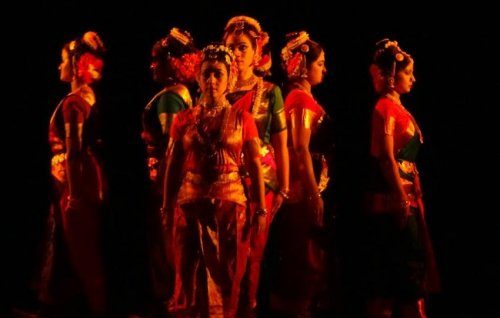 You also had a large choreographic oeuvre... Yes, we did. Govindan created a very innovative Shakuntala, where he enacted the role of Krishna. Also, Govindan's considerable talents as a Kathakali hero was much sought after by Kolkata's Gita Bitan and other institutions, mostly for Tagore's dance-dramas. We were involved in productions of Chitrangada, Shyama and many others. In fact, Kalamandalam's forte has been to present Tagore's famous dance-dramas in Bengali, set to the classical dance styles, in all parts of the country and all over the world. Have you retained Guru Govindan's Kathakali productions in your repertoire? Of course, we have. Abhay Pal, who was from Rabindra Bharati University, was a great help in this effort. Kalamandalam Venkit also taught our students Kathakali for 20 years, before he joined Rabindra Bharati. We also teach Kuchipudi, to complete the spectrum of South Indian classical forms in this part of the world!  Dr. Utpal K Banerjee is a scholar-commentator on performing arts over last four decades. He has authored 23 books on Indian art and culture, and 10 on Tagore studies. He served IGNCA as National Project Director, was a Tagore Research Scholar and is recipient of Padma Shri. Post your comments Please provide your name and email id when you use the Anonymous profile in the blog to post a comment. All appropriate comments posted with name & email id in the blog will also be featured in the site. |